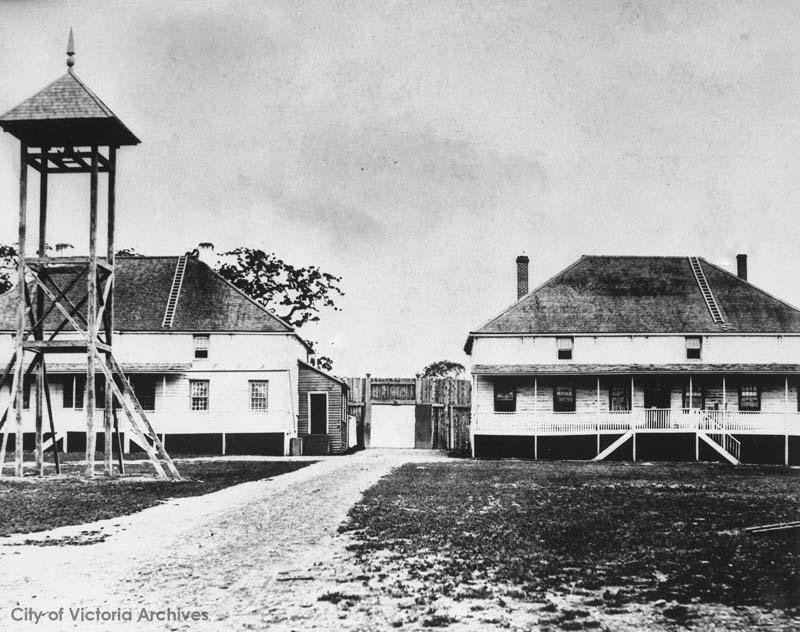By the early 19th century, the London-based Hudson's Bay Company (HBC) had emerged as the dominant fur-trading power in the Pacific Northwest. The HBC had established a series of permanent outposts throughout the area, including its headquarters at Fort Vancouver, near the mouth of the Columbia River, in current day Washington state. Fearing American annexation of the Columbia River region, George Simpson, HBC Governor, directed HBC fur trader James Douglas to establish a fort on the southern end of Vancouver Island.
On March 14, 1843, the Lekwungen people of southern Vancouver Island (today known as the Songhees and Esquimalt Nations) saw the arrival of the HBC steamship, the Beaver, in Victoria's inner harbour. The Lekwungen lived in extended family groups and resided in permanent and seasonal villages along the southeast coast of Vancouver Island from Esquimalt Lagoon to Cordova Bay, and extending to the Gulf Islands. In addition to hunting, fishing, and gathering berries and other edibles, the Lekwungen cultivated the root vegetable, camas. Cultivation included the regular burning of forest cover in order to create abundant camas meadows.
The Lekwungen assisted with the construction of the fort, and supplied the new arrivals with food and firewood in exchange for blankets. The Lekwungen received one HBC blanket for every 40 cedar logs supplied. Blankets were a traditional measure of wealth in the Lekwungen culture, and were often distributed as a gift at a potlatch. The potlatch is a large prestigious and spiritual ceremony and feast where possessions are given away to display wealth and enhance prestige. A potlatch was held on the occasion of births, deaths, weddings, the transfer of sacred names and titles, and other major events, and was a way of renewing family and friendship ties and redistributing wealth.
The settlement of the newcomers in their territory marked a shift in the lives of the Lekwungen and other neighbouring Indigenous peoples. The increasing number of settlers brought disease such as measles, dysentery, influenza, and smallpox, which resulted in a devastating loss of population. This, coupled with the presence of a new culture that was at times at odds with their own, led to major social disruption.







